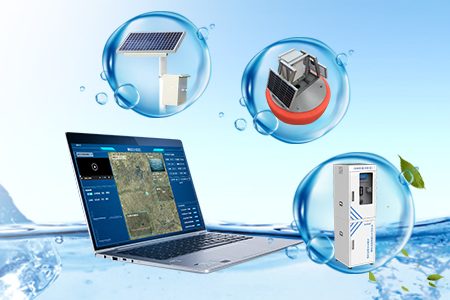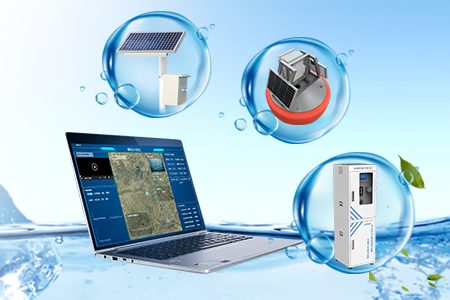
What is water quality monitoring?
Are these waters safe enough to swim in, fish in, or drink? Water quality monitoring provides this basic information.

Are these waters safe enough to swim in, fish in, or drink? Water quality monitoring provides this basic information.
Have you ever wondered in your spare time how we get information about our nation's rivers, lakes, estuaries and coastal waters? Are these waters safe enough to swim in, fish in, or drink? Water quality monitoring provides this basic information.
There are many ways to monitor water conditions. Monitoring specialists sample the chemical condition of water, sediments, and fish tissue to determine levels of key constituents such as dissolved oxygen, nutrients, metals, oils, and pesticides. They also monitor physical conditions such as temperature, flow, sediments, and the erosion potential of stream banks and lake shores. Biological measurements of the abundance and variety of aquatic plant and animal life and the ability of test organisms to survive in sample water are also widely used to monitor water conditions.
Monitoring can be conducted at regular sites ("fixed stations") on a continuous basis; at selected sites on an as-needed basis, to answer specific questions, or to characterize a watershed; on a temporary or seasonal basis (for example, during the summer at bathing beaches); at random sites throughout an area or state; or on an emergency basis (such as after a spill). Increasingly, monitoring efforts are aimed at determining the condition of entire watersheds -- the area drained by rivers, lakes, and estuaries. This is because we have come to realize the impact of land-based activities on the waters that drain the land, and the interconnectedness of all types of waterbodies, including those beneath the ground.

Monitoring can be conducted for many purposes. Five major purposes are to:
characterize waters and identify changes or trends in water quality over time;
identify specific existing or emerging water quality problems;
gather information to design specific pollution prevention or remediation programs;
determine whether program goals -- such as compliance with pollution regulations or implementation of effective pollution control actions -- are being met; and
respond to emergencies, such as spills and floods.
Some types of monitoring activities meet several of these purposes at once; others are specifically designed for one reason.
The responsibility to monitor water quality rests with many different agencies. State pollution control agencies and Indian tribes have key monitoring responsibilities and conduct vigorous monitoring programs. They receive pollution control and environmental management grants from the U.S. Environmental Protection Agency (EPA) that help them establish and maintain monitoring programs and report the results of monitoring activities to the EPA. Interstate commissions, like states and tribes, may also receive grants and maintain monitoring programs. Many local governments, such as city and county environmental offices, also conduct water quality monitoring within their boundaries. The EPA helps administer grants for water quality monitoring and provides technical guidance on how to monitor and how to report monitoring results.
The EPA also conducts some limited monitoring of its own. Its Environmental Monitoring and Assessment Program (EMAP) managed by the Office of Research and Development, is designed to provide status and trends information on statistically selected waters representing a variety of ecosystems. EPA Regional Offices conduct compliance and inspection monitoring of wastewater discharged by industries and municipal treatment facilities. EPA Headquarters and Regional Offices also sponsor or conduct monitoring projects designed to answer specific questions. EPA and state and tribal partners are currently working together on a series of statistically-designed surveys of the nation´s waters that will for the first time provide valid data on water quality trends and key stressors. Information on these studies are available on our National Aquatic Resource Surveys homepage.
Other Federal agencies are also involved in water quality monitoring. The U.S. Geological Survey (USGS) conducts extensive chemical monitoring through its National Stream Quality Accounting Network (NASQAN) at fixed locations on large rivers around the country. Its National Water Quality Assessment Program (NAWQA) uses a regional focus to study status and trends in water, sediment, and biota. The U.S. Fish and Wildlife Service, the National Oceanic and Atmospheric Administration, the U.S. Army Corps of Engineers, and the Tennessee Valley Authority are other examples of Federal agencies that conduct water quality monitoring to support their programs and activities.
Lastly, private entities such as universities, watershed associations, environmental groups, and permitted dischargers also conduct water quality monitoring. They may collect water quality data for their own purposes, or to share with government decision makers. Volunteer monitors -- private citizens who volunteer to be trained in monitoring methods, regularly collect and analyze water samples, conduct visual assessments of physical conditions, and measure the biological health of waters -- are a rapidly growing contingent providing increasingly important environmental information. Volunteer monitoring data are used for local decision-making and often to supplement state water quality data. For more information on volunteer monitoring, visit our volunteer monitoring website.
This brief introduction has provided a glimpse into the complex world of water quality monitoring. Efforts are currently underway to improve how monitoring is conducted, how information is shared, and how decisions based on monitoring are made.
JXCT provides environmental water quality monitoring system solutions, using intelligent information management system, combining the real-time online monitoring system and rapid response mobile testing equipment, implement "rivers and lakes water", "water", "sewage", "factory sewage water quality monitoring in the field of environmental protection" as well as aquaculture water quality monitoring. The water quality monitoring system collects the data of PH value, residual chlorine, turbidity, suspended solids, COD, BOD, conductivity, dissolved oxygen and other parameters of water quality, and transmits the parameter data to the Internet of Things cloud platform to realize the real-time monitoring of the data of each on-site water quality analyzer. The water quality monitoring system can be suitable for various Internet of Things application systems. Real-time monitoring and management of the status and operation of the access equipment, remote operation of the water quality analyzer, through the cloud platform to connect with the Internet of Things equipment to achieve accurate perception, accurate operation and fine management.